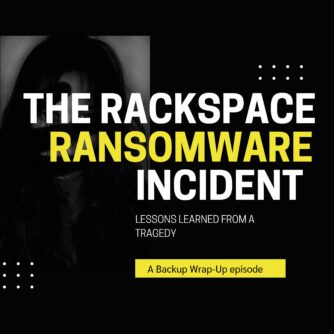You shouldn’t need an annual day to remind you to treat your sweetheart well. Every day should be Valentine’s Day, right? Reaching out and telling your sweetheart that you love them (or remember them if they are no longer with us) is something that you should do on a very regular basis.
Just like backups.
You shouldn’t have to remind yourself to do backups. In fact, backups should require no action on your part; they should just happen. Like love expressions for your sweetheart, they should happen at least on a daily basis – and possibly more often than that. Making sure backups “just happen” requires you to do a few things.
Automated scheduling
Your backup system should allow you to define a schedule for backups. The default setting for most people is once a night during a time when most people are not using the computing environment. For example, Time Machine defaults to once an hour.
Whatever the frequency, your backup system should be set up so that backups occur on a very regular basis without anyone having to make them happen. We’ll discuss how often that should be a little bit later in this blog post.
Storage available for backups
Backups are not going to happen if they have nowhere to store the data. Historically this meant you had a tape library full of tapes that were ready to be swapped in when necessary. Backup technology has evolved and most of us are using disk or cloud as the primary target. So the main challenge here is to ensure that the disk is available, online, and has sufficient capacity to hold your backups. (This is one of the great things about using the cloud as your backup target; it’s never out of space.)
This is one of the reasons why I do not like Time Machine for your regular laptop backups. It requires you to plug in a portable hard drive in order for the backups to work, then you have to unplug it in order to get your backups away from the thing that you’re backing up. (The 321 rule is always waiting.) So just make sure that whatever backup storage you have, it is always available and always has available capacity for your backups.
How often should you backup?
The more often you backup, the less data you will lose. In more technical terms, the more often you backup, the shorter recovery point objective (RPO) you can support. Let’s consider a few extremes.
If you only backup once a night and your off-site storage system requires swapping tapes, the best RPO you can support is 96 hours. Why is that, you say? Let’s say something bad happens on Monday before the iron Mountain truck comes. If you are sending backups offsite every day, what night was the most recent off-site backup taken? The answer is Thursday night.
Think about it. The last truck to leave your facility left Friday morning, which means it has Thursday night’s backups. That means you’re going to lose all of Friday’s work, any work done over the weekend, and any work that was done on Monday prior to the disaster. That’s 96 hours of lost work. This is why backup frequency and off-site frequency matters. However, backing up more often and sending backups offsite more often can be a costly endeavor, so this must be a decision based on business requirements.
This means this is a business discussion, not a technical one. Stakeholders in your company should decide what the RPO is for their environment because it should be based on the cost of lost data for that particular stakeholder. Business units with very high data loss costs will seek a much tighter RPO, perhaps an hour or even a few minutes. Such an RPO requires backing up more often. And that is the answer to the question, “How often should I back up?”
Give your backup admin some flowers
I’ll bring this back to Valentine’s Day by saying that your backup admin has a very tough job. No one remembers the hundreds of thousands of backups they got right; they only remember the one restore they got wrong. Get them some flowers, chocolate, or whatever it is that gives them a smile. Say thank you, have a nice Valentine’s Day – and then don’t wait another year before you do that again.
Written by W. Curtis Preston (@wcpreston), four-time O'Reilly author, and host of The Backup Wrap-up podcast. I am now the Technology Evangelist at Sullivan Strickler, which helps companies manage their legacy data






